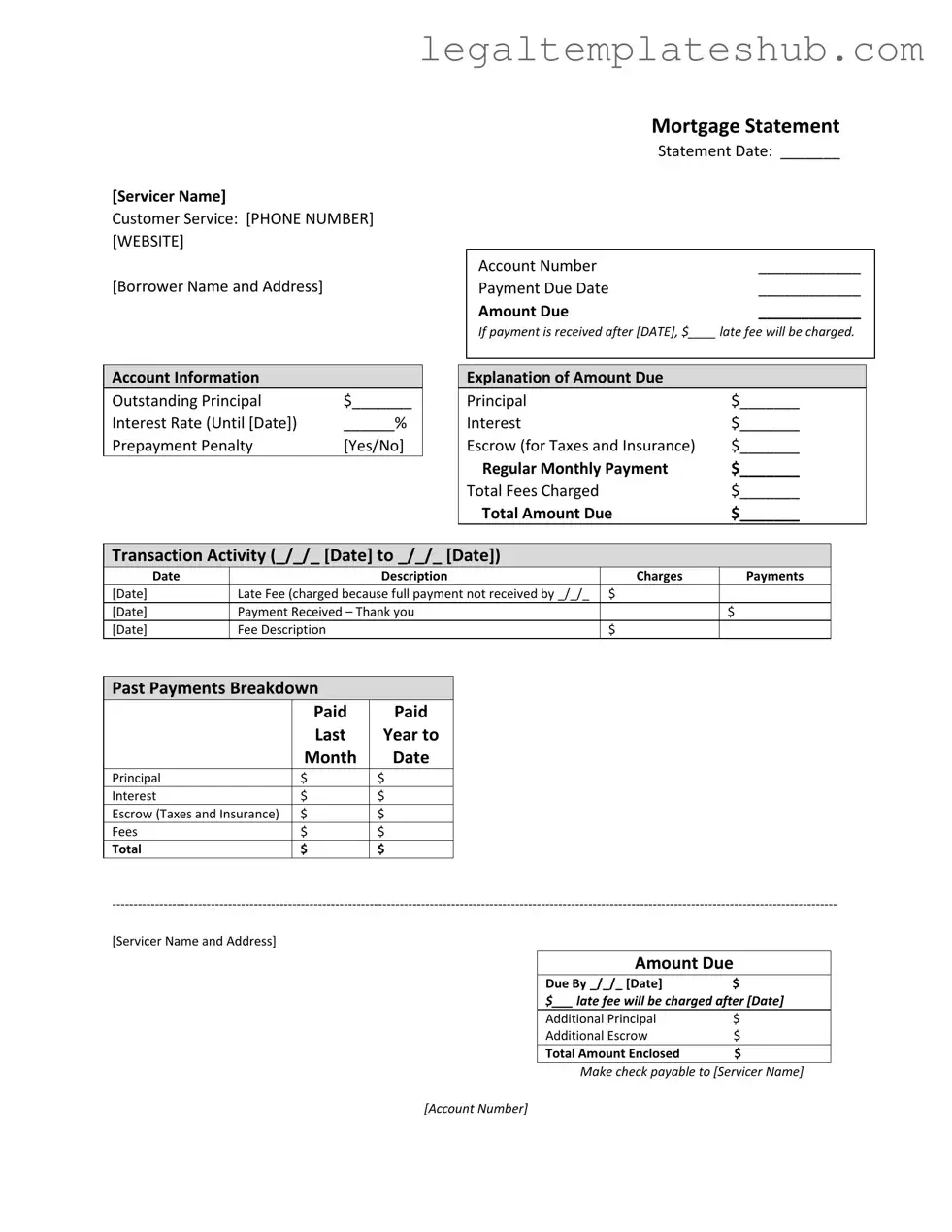Blank Mortgage Statement PDF Form
A Mortgage Statement is a document provided by your mortgage servicer detailing your current mortgage balance, payment history, and any fees incurred. It serves as an important tool for managing your mortgage and understanding your financial obligations. Stay informed about your account by reviewing your statement regularly and ensuring timely payments.
Ready to fill out your Mortgage Statement? Click the button below to get started!
Access Editor
